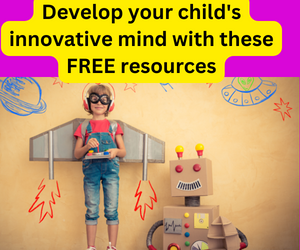We are all born very curious—we need it for our survival.
Our curiosity leads us to explore the world around us and make sense of it. This curiosity helps us learn what might be dangerous and what brings us joy.
Soon after we learn how to talk, we start bombarding our parents and carers with endless questions. (When my boys were younger, I was often exhausted from trying to keep up with their constant flow of questions.)
If you search online to learn how many questions pre-schoolers ask a day, you will find that some estimates say that children ask about 400 questions a day, and some say that young children can ask as many as 23 questions in an hour!
Imagine having 23 children in a classroom; each asks 23 questions during one lesson. That’s more than any teacher can handle.
As a parent, you may end up being asked more than 300 questions a day by your child.
On the other hand, as adults, we’re not asking questions at nearly the same pace. In fact, we’re pretty far from it.
You might be wondering now why this is the case.
So let’s explore it.
This decline in the number of questions we ask is not because we’ve all learnt everything there is to know. (I’m not hinting you are not knowledgeable. However, let’s face it: the more we know, the more we discover how much we don’t know.)
As it turns out, something happens to our curiosity as we enter our education system.
The design of our education system and its classroom environment harms our curiosity, which continues to drop as we go up the year levels.

Why is this? There are two main factors at play.
-
Focusing on answers, not questions
As you are probably aware, our education system is answer-driven, not question-driven. Therefore, within our education system, children are rewarded for providing answers. Moreover, children are tested on their ability to provide the right answer. They are not rewarded or tested on being able to come up with beautiful and interesting questions about the world around them. Consequently, as children move through the school years, they ask fewer questions, until at some point, they hardly ask questions at all.
-
Not providing a safe environment
When a child asks a question, they’re in a vulnerable situation. Other children might pass judgment on their questions. Others might think their question is stupid, or silly. And it might be that the teacher brushes off their question as not important or not relevant. Therefore, creating a safe environment where children feel confident to ask ANY question they have is paramount to keeping up children’s curiosity.
This means that the way educators and parents treat children’s questions influences whether children will continue to pose questions.
This is excellent news, as it means each teacher and parent has the power to help children stay curious.
As parents and educators, we all need to do everything we can to help children keep the spark of curiosity. It is so crucial because curiosity drives learning and ultimately helps us to become lifelong learners.
On top of that, it is important to note that curiosity plays another critical role in our lives. Curiosity is like a spark. It’s like having a small fire burning within us, and we need to keep it burning because this fire drives enjoyment and happiness in life.
When you are curious, you’re amazed by the things around you. You are filled with wonder, awe, excitement, and marvel.
The world is more colourful when you keep the flame of curiosity burning. It is more interesting and there’s so much to explore.
Our curiosity level directly impacts our well-being. It affects how we engage with people, animals, plants and everything else around us.
And curiosity also plays a big part in our creative thinking.
So as parents and educators, how can we help children stay curious? Here are 5 easy strategies.
-
Don’t pass judgment on questions.
It is crucial to avoid passing judgement on any question. There are no stupid or silly questions. All questions are valid and important. You can say that’s a great question; thank you for asking this important question, but never brush off a question as irrelevant or unimportant.
-
Allow children to ask any question at any time.
Let them ask questions that might seem unrelated to the topic at hand. If you can’t answer the question immediately, write it down and tell the child you will get back to them with an answer.
-
Let children’s curiosity lead their learning.
If you want your students or child to learn about science, for example, you can start by asking them a big question, such as “How do things work?” and then ask them to come up with questions about the things they are curious to learn about. They might ask: how does an aeroplane fly? How does a trampoline help us jump high? Then ask them to explore the question they are curious about. The main point here is to let their curiosity lead their learning.
-
Reward them for asking questions.
Develop a habit of acknowledging and rewarding children for asking questions. Praise them for coming up with questions and give them enough space and time to think about and come up with interesting questions.
-
Challenge children to come up with more questions.
Challenge your child or students to come up with many questions. For example, present them with a visual representation of an object, a natural phenomenon, or an animal (it can be a photo of a trampoline, an image of a dragonfly, or a video showing a volcanic eruption) and ask them to come up with as many questions as they can about it. Encourage them to come up with 20 or even 50 questions.
Want to further develop your children’s thinking capabilities in a fun and engaging way? Join the FREE webinar, “Unleash your creative superpowers”, and open the door to a magical world.








